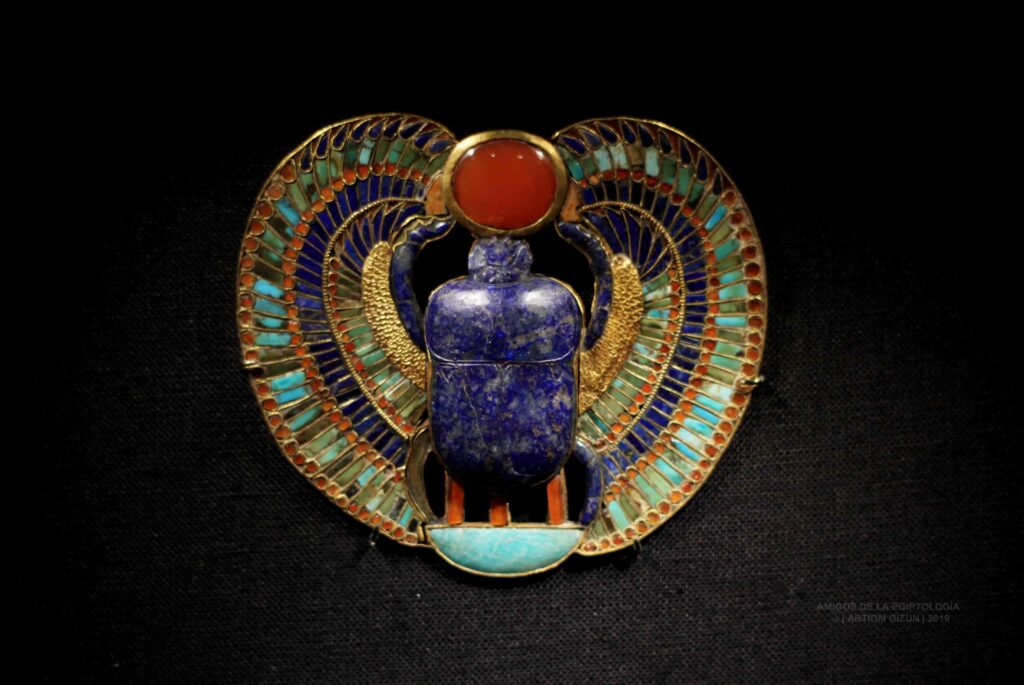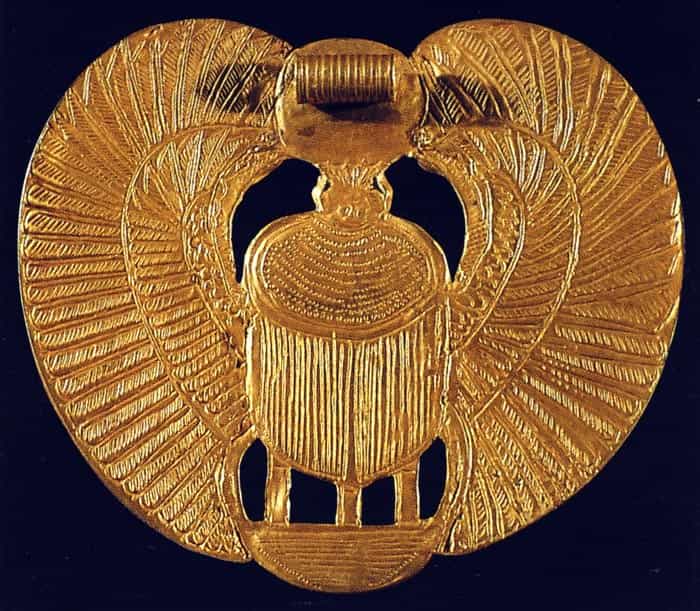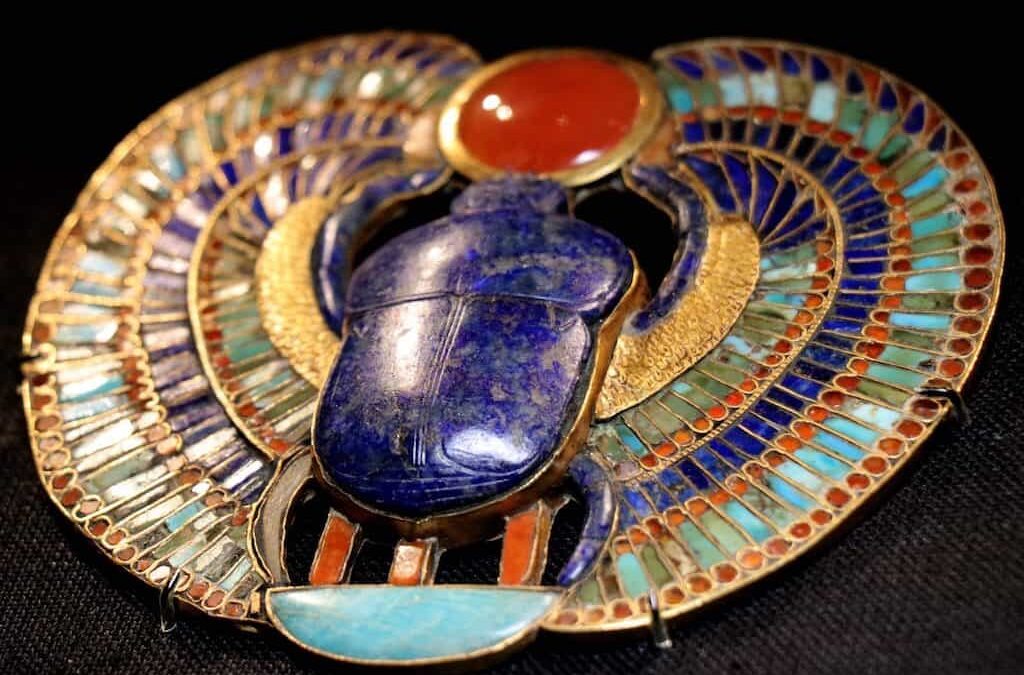This winged scarab of the famous Egyptian pharaoh Tutankhamun of the Eighteenth Dynasty, found in his tomb by British archaeologist Howard Carter, is a true masterpiece of goldsmithing.
It dates from the fourteenth century BC and measures 9 cm high and 10.5 cm wide.
The materials used are mainly gold, lapis lazuli, carnelian, and turquoise. Together, they produce a great chromatic impact, as is the case with his well-known funerary mask.
Represented is one of the most repeated subjects of all the iconography of Ancient Egypt: the dung beetle, which used to be placed under the mummification bandages at the level of the deceased’s heart.
In the case at hand, it did not appear under the bandages but rather in a somewhat jumbled box along with other valuables. Its body is made of deep blue lapis lazuli inlaid with golden pyrite, one of the component materials of this rock.
The beetle’s beautiful and showy wings are curved and end in a carnelian solar disk, which the insect holds with its mouth and front legs. It also has two hind legs, less conspicuous than the front legs, and the middle legs were sacrificed in pursuit of the work’s elegance (remember, this beetle has six legs and not four).
Despite the chromatic richness that it presents, it is the blue of the lapis lazuli (which is also exhibited in the wings) that prevails and dominates the whole set.
However, the huge orange solar disk that stands out by itself is very striking, and the curved wings work decisively so that we pay attention to them without forgetting the striking and wide gold border where it is embedded.
The back of the beetle is completely gold and presents a wide ring at the top, so that it can be hung with a cord and worn on the chest, probably at the level of the heart.
Finally, we must remember that the dung beetle was a very popular symbol among the ancient Egyptians—it was considered one of the most important protective amulets available.
These amulets have been found made in a multitude of materials of more and less value. People bought what they could afford. Undoubtedly, those made of lapis lazuli were the most valuable, worthy of the pharaohs themselves, which was like saying it was of the gods.









